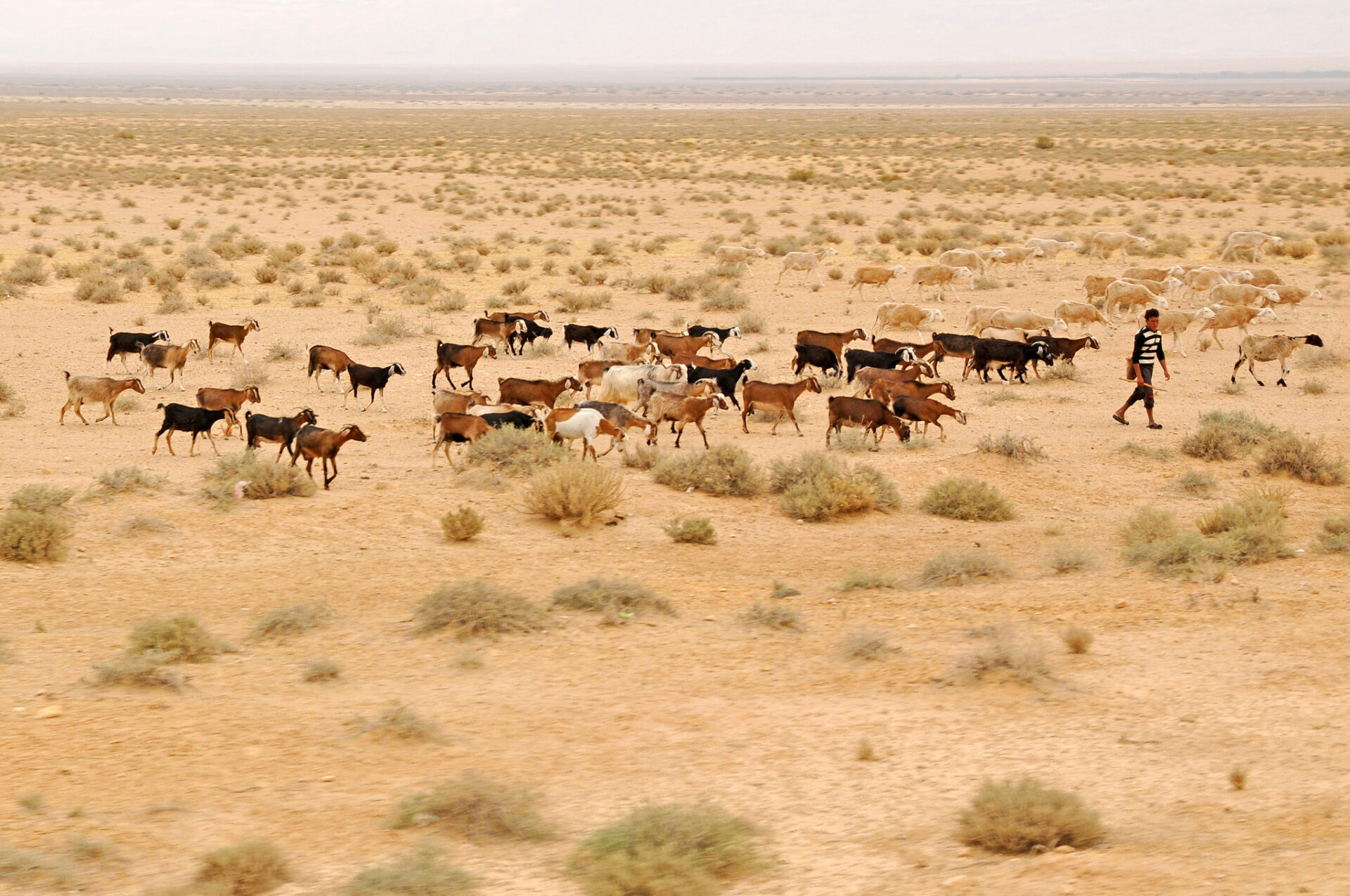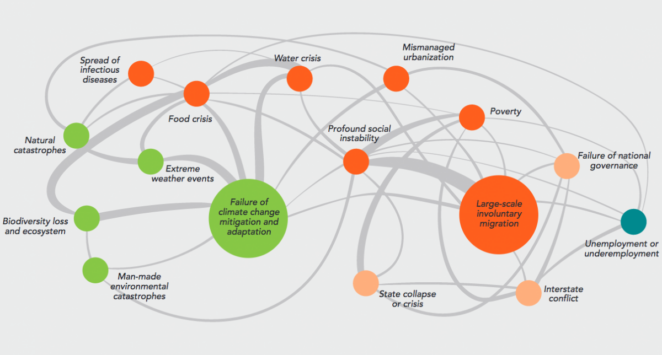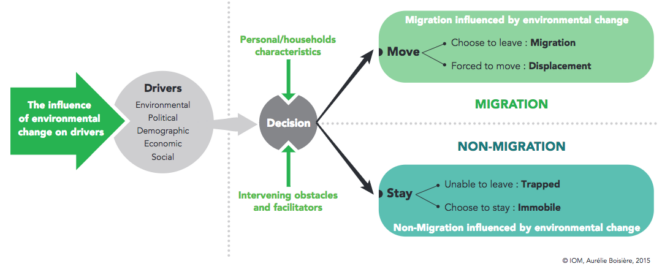Climate Change & Environment Nexus Brief: Migration

Introduction
Environmental factors have, together with other factors, always acted as a driver of human mobility, for example as a result of extreme weather events, sea level rise or accelerated environmental degradation, including coastal erosion, desertification and biodiversity loss. Climate change, the environment and migration are thus interconnected, either directly or indirectly (see Figure 1 below).
A failure of climate change mitigation and adaptation might lead to deterioration of environmental conditions, food crises and enhanced water shortages, which – together with other factors – have an impact on livelihoods strategies, among which is migration. However, the connection between climate and environmental change and migration is by no means deterministic, and the direct effect of environmental change on migration should not be overestimated. Migration is a multi-causal phenomenon, where climate change acts as an amplifying factor thus adding new complexity to the environment-migration nexus.
In order to understand more about this nexus the Swiss Agency for Development and Cooperation (SDC) has started a dialogue to address the linkages between climate change, environment and disaster risks on the one hand and migration and economic development on the other. The dialogue includes thematic inputs, e-discussions and a workshop organized in Morocco in March 2016, with a particular focus on North Africa.
This nexus brief* focuses on the climate change, environment and migration nexus and synthesizes the main findings from this process to date, including the relevant literature. While addressing this nexus in general, this brief has a specific focus on North Africa and explores different types of migration.
*Download the full text from the right-hand column. This publication is also available to download in French and Spanish (see Further Resources). An overview of the brief is provided below alongside the Key Messages and Key Issues identified through the dialogue generated by SDC.

Overview
This nexus brief discusses the interconnections of climate change and migration, and the linkages between environmental and migration patterns.
It also provides Facts & Figures on:
- Future climate risks across all sectors
- Migration at a global scale
- Rural-urban migration
- Environmental migrants Migration associated with disasters
It also looks at policy developments at a global level, and describes the Key Issues regarding the Climate Change & Migration Nexus.

Key Messages
-
The impact of climate change on migration will increase in the future. There is, however, low confidence in quantitative projections of changes in mobility, due to its multi-causal nature.
-
Sudden-onset disasters such as flooding, storms and earthquakes have displaced 26.4 million people each year during the last couple of years. The effects of gradual changes are likely to have an even greater impact on the movement of people in the future than extreme events.
-
Climate change and global environmental changes affect migration but are not the sole drivers.
-
Global environmental change exacerbates existing challenges in urban areas such as unbalanced population structures, lack of social cohesion and social inequality. The extent to which policies create an enabling framework beneficial to migrants and inhabitants will determine to a large extent how functional a city will be.
-
Migration is increasingly considered in the discussion of climate change, while environmental and climate issues are included in policy processes on migration. Nevertheless, there is still a lack of comprehensive policy responses on migration and the environment.
-
Populations with limited resources may not have the means to benefit from migration as an adaptation strategy and therefore find themselves trapped in vulnerable situations.
-
Classic strategies of development cooperation in rural areas, such as livelihood diversification and sustainable management of natural resources, seem to be valid approaches for climate change adaptation and for reducing the pressure to migrate to urban areas.
-
SDC has identified the need to further enhance the knowledge base, and to foster interaction and intersectoral cooperation on the nexus between climate change and migration.
This Nexus Brief was contributed to by Myriam Steinemann (INFRAS), Otto Simonett (Zoï), Christina Stuhlberger (Zoï), Yvonne Diallo-Sahli (SDC), Bettina Etter (SDC), Daniel Maselli (SDC), Petra Sigrist (FDFA).
Suggested Citation
Steinemann, M., Simonett, O., Stuhlberger, C., Diallo-Sahli, Y., Etter, B., Maselli, D., and Sigrist P. (2016) Migration. Climate Change & Environment Nexus Brief. Swiss Agency for Development and Cooperation: Bern, Switzerland.
(0) Comments
There is no content